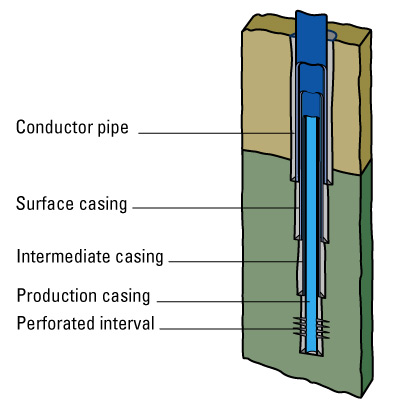1. n. [Drilling]
Large-diameter pipe lowered into an openhole and cemented in place. The well designer must design casing to withstand a variety of forces, such as collapse, burst, and tensile failure, as well as chemically aggressive brines. Most casing joints are fabricated with male threads on each end, and short-length casing couplings with female threads are used to join the individual joints of casing together, or joints of casing may be fabricated with male threads on one end and female threads on the other. Casing is run to protect freshwater formations, isolate a zone of lost returns, or isolate formations with significantly different pressure gradients. The operation during which the casing is put into the wellbore is commonly called "running pipe." Casing is usually manufactured from plain carbon steel that is heat-treated to varying strengths but may be specially fabricated of stainless steel, aluminum, titanium, fiberglass, and other materials.
See related terms: box, brine, cased hole, casing grade, cement bond log, concentric, day rate, displacement, float joint, float shoe, joint, pin, scratcher, turnkey
2. n. [Well Completions]
Steel pipe cemented in place during the construction process to stabilize the wellbore. The casing forms a major structural component of the wellbore and serves several important functions:
The casing string provides a means of securing surface pressure control equipment and downhole production equipment, such as the drilling blowout preventer (BOP) or production packer. Casing is available in a range of sizes and material grades.
See related terms: BOP, casing grade, casing joint
